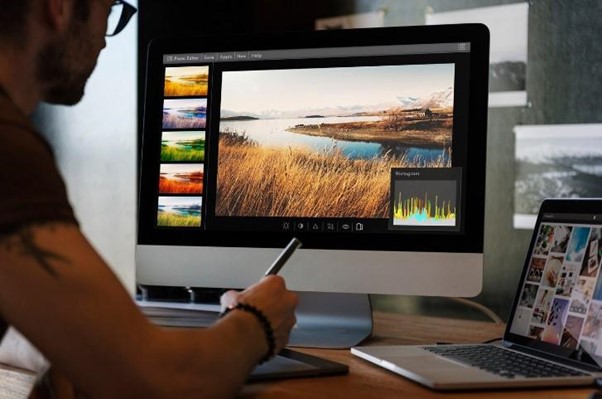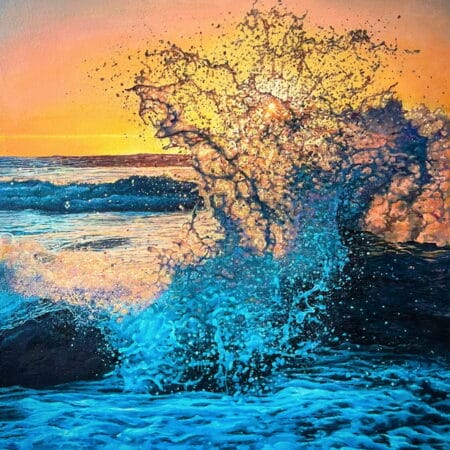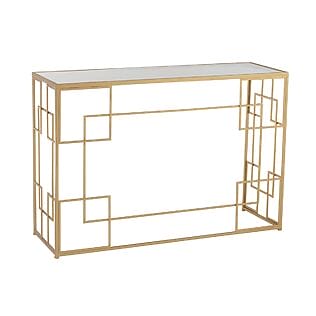Image editing is one of the most essential skills in modern graphic design. Whether for marketing, art , or photography, image editing allows you to specifically design and reinforce visual messages.
Today, graphic artists have numerous techniques at their disposal to optimize photos, add creative flair, and perfect details. This article offers a comprehensive overview of basic photo editing techniques on Mac or Windows , helpful tips for a professional, and insight into using AI and photo effects to make work more efficient and creative.

Image Source: FreePik
Photo editing software: free or paid?
Choosing the right image editing software depends on the individual needs and budget of the graphic designer. A free image editing program, or freeware, often offers basic features that are sufficient for beginners or smaller projects. However, many free programs lack the advanced tools that professionals need for detailed work.
Paid photo editing software usually offers more comprehensive functions and support, but is often associated with higher costs. It is important to find the right balance between costs and the range of functions in order to meet your own requirements.
Tip: Test before buying
Many paid programs for image processing under Mac and Windows offer free trial versions . Use this option to check the functions and user -friendliness before you decide to buy.
The understanding of image composition
Before actually editing an image, it's important to composition . The way elements are arranged in an image significantly influences how it is perceived.
One of the most well-known rules is the "golden ratio" or "rule of thirds." This rule divides the image into nine equal parts by dividing it into thirds both vertically and horizontally. The essential image elements should be placed along these lines or at their intersections to create harmonious and appealing image
Tip: use grid lines
Raster lines or auxiliary lines are useful tools to comply with the third -party rule. They help to correctly position elements and ensure that the image is visually balanced.
Color corrections and color management
Working with colors is an important aspect of image processing Unpleasant images often look flat or colorless, which makes them less appealing. This can be changed quickly by color corrections.
The brightness, contrast and color saturation should be adjusted in such a way that the colors appear more lively and at the same time the natural impression is preserved.
Tip: Use gradation curves
The gradation curves offer a precise way to change brightness and contrast values without losing the details in the shadows or lights. They are ideal for specifically adapting individual areas of an image and checking the tonal values finer.
In addition, the right color management crucial. Graphicists should ensure that they work on calibrated monitors to reproduce the colors exactly if the image is intended for printing.
Retouching techniques: optimize subtleties
Image processing is often about removing small mistakes or unwanted elements. This can range from the elimination of blemishes in a portrait to the removal of disturbing objects in the background.
Tip 1: Non -destructive processing
Instead of working directly on the original image, you should always work in separate levels or with so -called masks. This technology enables changes to be made without permanently changing the original image. So you can undo or optimize adjustments at any time.
Tip 2: Clone stamp and repair brush
The Clone Stamp and the Healing Brush are two of the most commonly used tools in retouching. While the Clone Stamp pixel-precise areas of the image, the Healing Brush ensures that the new area blends seamlessly into its surroundings.
Both tools require a certain exercise to achieve a realistic result, but offer immense control when correcting smaller flaws.
Sighting and blurring use targeted
A common problem with photos is the lack of sharpness. This can be caused by camera settings, movements or poor lighting conditions. Due to the targeted use of sharpening tools, a picture can again appear clearer and more precise.
Tip: Selective sharpening
Instead of sharpening the entire picture, you should concentrate on the most important image areas. It is often sufficient to sharpen your eyes in a portrait or certain details in a landscape in order to give the image more depth, while the background is deliberately out of focus.
However, blurring can also be used as a creative means. It directs the viewer's eye to certain areas of the image and ensures a harmonious depth effect.

image source: Freepik
Adjust the contrast and dynamics
Contrasts play a crucial role in how pictures are perceived. Too low contrasts often make images appear pale and boring, while excessive contrasts can swallow the image details. An optimal contrast setting ensures a clear distinction between the light and dark areas of the image without any important details being lost.
Tip: Dodge and Burn
"Dodge and Burn" is a technique that comes from analog photography and is now widespread in digital image processing. It makes it possible to brighten or darken areas of the image in order to influence the play of light and to give the image more depth.
Set the image size and resolution correctly
The correct image size and resolution are crucial, especially if the image is being used for print or digital platforms. An image with too low a resolution can blurry or pixelated , while one that is too high will result in unnecessarily large file sizes and slow loading times.
Tip: scaling the image size without loss of quality
When enlarging or reducing an image, you should make sure that the quality is preserved . Some algorithms or processing techniques make it possible to adapt the image size without being lost.
Add textures and effects
Textures and effects can give a picture a special depth and atmosphere. Whether it is about giving a picture a vintage look or making it appear more realistic-textures and effects offer versatile options.
Tip: subtle application of effects
It is important to apply effects subtly to avoid that the image looks artificially or overloaded. A slight addition of grain can, for example, create the impression of analog film without alienating the image too much.
Photo effects for special accents
Photo effects can give a picture a unique look and increase the mood or atmosphere. Effects such as vignettes, blurring or color filters can steer the focus on certain image areas or create a special emotional effect.
However, they should be used in a targeted and economical way so as not to overload the image. Applied correctly, effects give the image that certain something and make it more visually appealing.
Tip: Apply effects subtly
Excessive use of effects can make the image look unnatural. Use effects discreetly to preserve the natural character of the image.
AI as a tool
Artificial intelligence (AI) has revolutionized image editing and photo montage by automating processes and expanding creative possibilities. AI can do tasks such as background removal, skin retouching or color correction faster and more precisely, which saves time and increases efficiency.
AI is also used more and more for creative effects such as style transmissions or automatic image optimizations Nevertheless, human control remains important to achieve the best possible result.
Tip: Check AI results manually
AI can impressive results , but it is worth optimizing the results manually afterwards. So you can make sure that everything meets your creative ideas.
Conclusion
Image processing is a combination of technology and creativity. With the right tools and techniques, not only errors can be corrected, but also impressive visual effects can be achieved. Whether color correction, retouching or the use of effects - every processing step helps to raise the image to the next level.
With the support of AI and the choice of the right image editing program, the process becomes even more efficient. Ultimately, it is the combination of technical knowledge and creative vision that makes a great power from a good picture.

Owner and Managing Director of Kunstplaza. Publicist, editor, and passionate blogger in the field of art, design, and creativity since 2011. Successful completion of a degree in web design as part of a university program (2008). Further development of creativity techniques through courses in free drawing, expressive painting, and theater/acting. Profound knowledge of the art market through many years of journalistic research and numerous collaborations with actors/institutions from art and culture.

















